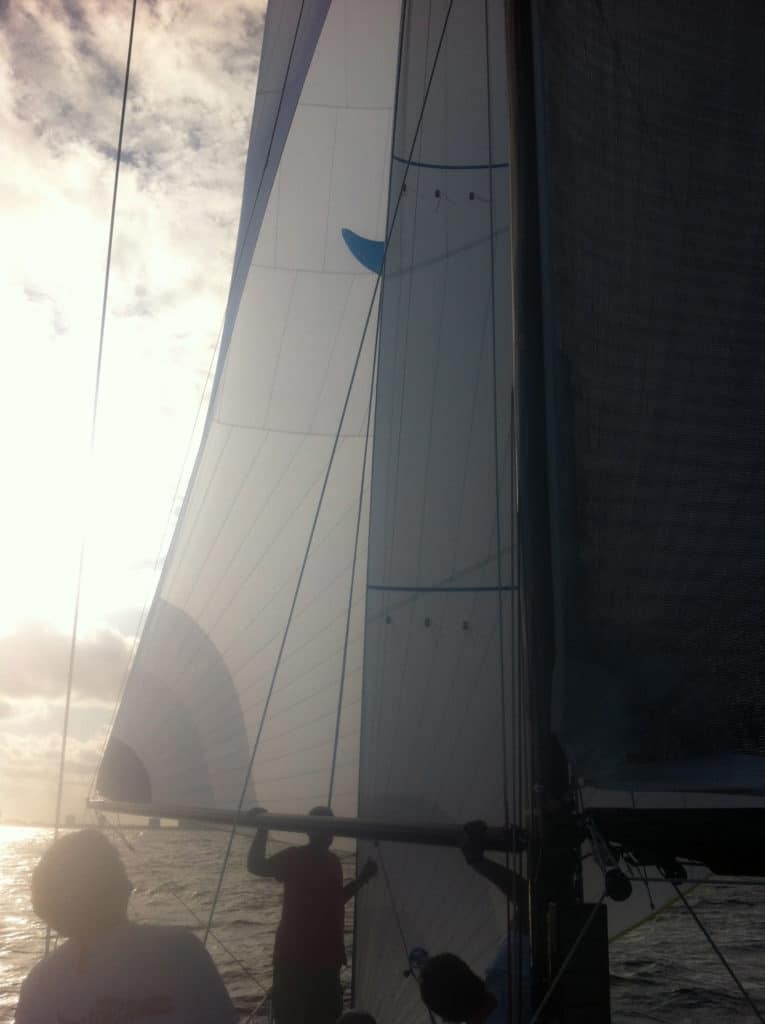
130116_KWRW_1
Last year, my first attempt at the Lauderdale to Key West Race did not go well. It was memorable, but much in the way a dinner is memorable when the waiter accidentally dumps a plate of marinara in your lap. The race produced a good yarn for the magazine (in our May 2012 issue) and more than a few worthwhile lessons. But I don’t think I can really say I’ve sailed a particular distance race unless I’ve crossed the finish line, which is part of the reason I find myself in Fort Lauderdale again, on the Wednesday before Key West Race Week, getting ready for the 2013 Fort Lauderdale to Key West Race, aka the Key West Feeder Race (which I always like to point out, at 38 years old, is 12 years older than Quantum Key West Race Week.)
There’s also another reason. I’ve always wanted to do the full Key West experience. Doing the Feeder Race and then the buoy racing during Quantum Key West Race Week is about the closest we can come to the old SORC experience, albeit in a much-compressed format. By time I got into big boat sailing, that event, much revered in the sport, had been reduced to 4 days of buoy racing and had little in common with its heydey in the 70s and 80s.
Last year, I spent about 30 hours in Key West before heading out for another assignment elsewhere in the state. This year, I’m in for the full Monty, and on the same boat, Phil Lotz’ Swan 42 Arethusa, which makes the logistics quite manageable.
For the Feeder Race, it’s actually an IRC Swan 42. We’ve added a spinnaker pole, new symmetric and asymmetric kites, and a small prod. The IRC rating drops, approximately, from 1.171 to 1.159. But perhaps the biggest advantage is the ability to pole out the spinnaker and sail low downwind when the breeze is up. Our first real test of this configuration was the Storm Trysail Club’s IRC East Coast Championships in Annapolis, Md., in late October. Though the fleet was small, we had exactly the benchmark we needed, Ken Colburn’s Apparation, the reigning Swan 42 National Champion. The results were impressive. Provided the wind is in the double digits, we were able to sail the same speed and 5 to 15 degrees lower downwind. Upwind, with slightly reduced sail area, we were able to hold our own. We struggled in the distance race, but won all four buoy races, both across the line and on corrected time.
Of course that’s a small sample size. This race, and then a series of Caribbean Regattas—we’ll be racing in one-design trim during Key West Race Week—will provide a much more comprehensive test of the modifications.
The forecast has been quite variable for the race—though it’s remained light no matter the direction until a front pushes through late Thursday or early Friday with some breeze from the north. But even with light breeze, provided it’s steady, we can make some good progress down the track. As I did last year, I’ll try to post a few updates to our Facebook page. We’re rarely out of cell phone range—another quirk of this distance race—so it shouldn’t be hard to get a few videos and pictures uploaded. There’s also the race tracker, the race’s website, and its own social media.
Access_ SW‘s complete coverage of Key West._









